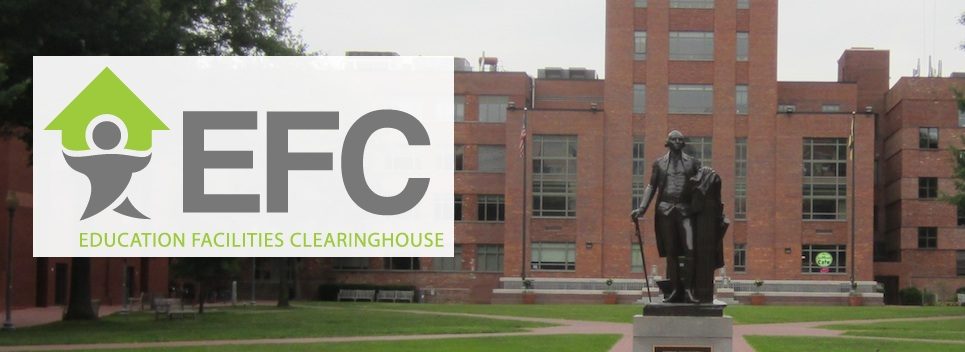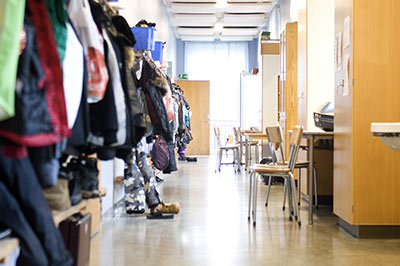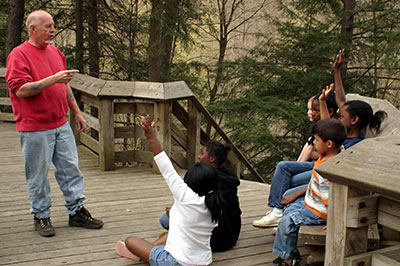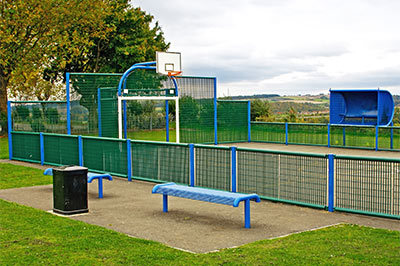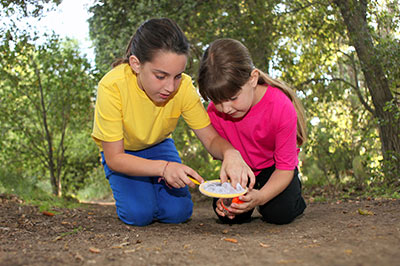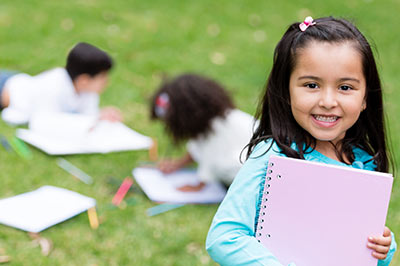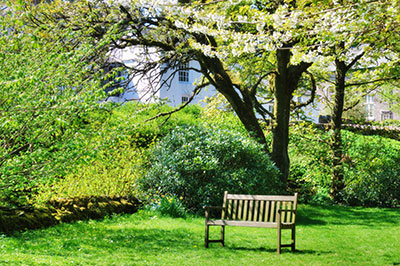By Bill Blumenthal, VP, PC4HS.
When launching an upgrade to your school’s cleaning program, consider starting by cleaning up your ‘cleaning’ products to reduce unnecessary chemical use. In many cases, your custodial crew and teaching staff can reduce or eliminate many cleaning chemicals—such as those with fragrances—without sacrificing effective cleaning.
To ensure that what you do use is ‘greener,’ choose products certified by Green Seal’s GS-37 or UL Environment’s Ecologo or those products having EPA’s Safer Choice label, for example. In some circumstances, an EPA-registered disinfectant might be needed as the lesser of two evils (pathogens vs. harsh germicidal chemicals).
There are sound reasons to use less cleaning chemistry.
Less Toxic, Disruptive Chemistry = Greater Health
Endocrine Disruptors (EDs), found in many common cleaning and maintenance products, are chemicals that act like hormones in humans and wildlife. EDs can also be produced by reactions related to product ingredients, such as when terpenes react with air pollution to create formaldehyde. EDs are often active in parts-per-billion, thus the “dose makes the poison” rule may not apply. Tiny amounts of EDs can have a big effect on body function and some may cause cancer (DHHS, 2014).
Ingredients such as bleach, quats, phthalates, and volatile organic compounds (VOCs) in cleaning or disinfecting products are suspected to cause or aggravate respiratory ills such as asthma or chronic obstructive pulmonary disease (COPD). Asthma is the number one chronic cause of student absenteeism in schools. One out of every 10 school-aged children has asthma, resulting in more than 10 million missed school days per year (EPA, 2013). Ingredients in common cleaning products may worsen asthma (Vizcaya et al., 2015).
Breathing easier at school can improve performance of students, teachers, and staff. Thankfully, reducing or eliminating exposure to hazardous cleaning chemicals can enhance both health and the bottom line.
Less Harsh Chemistry = More Money
School funding is often based on attendance, so reducing triggers for asthma and other respiratory conditions may improve attendance and fiscal support. Elk Grove Unified schools (CA) reported a two-percent attendance gain associated with implementation of green cleaning according to a Regional Asthma Management and Prevention (RAMP) report (RAMP, 2009). Eliminating aerosols and hazardous products in a Pennsylvania school district saved $19,883.25 annually according to American School and University magazine (Shideler, 2001).
The switch to more benign ingredients in green-certified cleaning products can save money in other ways too. Major green certifications require cleaning products be purchased as concentrates to reduce packaging and carbon-intensive transport of water. Dispensing concentrated solutions via automatic dilution systems reduces the added costs associated with ready-to-use (RTU) products.
Less Dirty Chemistry = More Time, Safety
If not thoroughly rinsed from surfaces, ‘cleaning’ chemicals can actually make surfaces dirtier by leaving residues. Many residues are also biodegradable, which means they may harbor microbes that feed on residues. Removing residues is additional work and wastes time. Nonchemical interventions—such as dry steam vapor sanitation, microfiber and water programs, spray-and-vacuum systems, and other reduced-chemistry methods—may be safer cleaning alternatives that also save time.
To illustrate the benefits of one of these nonchemical interventions, consider the microfiber and water method. Microfiber cloths or mops consist of ultrafine synthetic strands, commonly polyester or polyester-polyamide blends. Microfiber cleaning cloths and mops cost more than cotton cloths or mops but are often more economical due to inherent durability and performance traits. For instance, woven microfiber (sometimes called “split microfiber”) captures particles and moisture better than cotton terry towels, without producing lint.
In many cases, microfiber cloths and mops can clean using just tap water and a mild neutral-pH cleaner, if needed. Utilizing microfiber and water instead of harsher cleaning chemicals reduces negative chemical impacts and purchasing, transport, storage, inventory, and disposal costs.
Less Unwanted Chemistry = Cleaner Environment
What is not brought into your school or classroom will not have to be removed later. Avoid the introduction of unnecessary chemical cleaners into schools. A cleaner, healthier school environment can be achieved with less cost, freeing up resources for better teaching and learning.
Printable Blog
References
Regional Asthma Management and Prevention (RAMP). (2009). Breathing Easier − School Districts Make the Switch to Certified Green Cleaning Products. Retrieved from http://www.rampasthma.org/wp-content/upload s/2009/11/Breathing-Easier-Report.pdf
Shideler, L. (2001). A Clean School is a Healthy School. American School & University. Retrieved from http://asumag.com/maintenance-amp-operations/clean-school-healthy-school?page=4
United States Department of Health and Human Services (DHHS), (2014). 13th Report on Carcinogens. Retrieved from http://ntp.niehs.nih.gov/pubhealth/roc/roc13/index.html
United States Environmental Protection Agency (EPA). (2013). EPA Asthma Fact Sheet. Retrieved from http://www.epa.gov/asthma/pdfs/asthma_fact_sheet_en.pdf
Vizcaya, D., Mirabelli, M. C., Gimeno, D., Antó, J. M., Delclos, G. L., Rivera, M., ... & Zock, J. P. (2015). Cleaning products and short-term respiratory effects among female cleaners with asthma. Occupational and Environmental Medicine. Retrieved from http://oem.bmj.com/content/early/2015/04/23/oemed-2013-102046.abstract
About the Author
William R. “Bill” Blumenthal is vice-president of the 501c3 nonprofit Process Cleaning for Healthy Schools® (PC4HS) organization. He is a 17-year veteran of the cleaning industry experienced in both internal and contracted operations. Blumenthal is Custodial Supervisor for Douglas County School District in Nevada. bblument1@gmail.com
